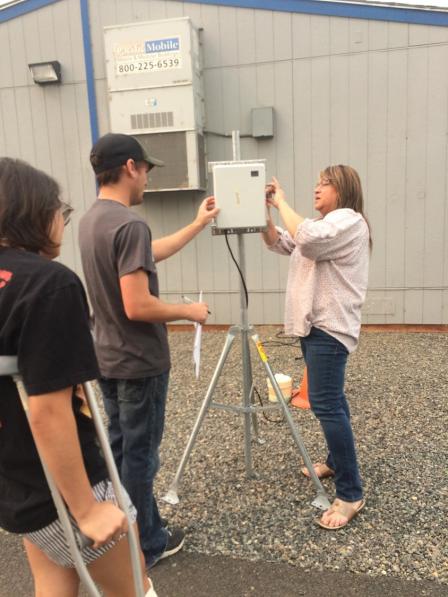Conferencing In
CONFERENCING IN
Heritage students shine on the national level
Eliseo Alcala was hired by Noel Communications just before he graduated in December 2018. A computer science major, Alcala had participated
in the Society for the Advancement of Chicanos/ Hispanics and Native Americans in Science (SACNAS) 2018 conference in San Antonio, TX. There he presented a research paper on “Broadcasting Technologies and Data Mining Techniques” – a hot topic in computer science. Representatives from Noel said they were impressed by the opportunities given Heritage students on cutting-edge technology research.
Likewise, computer science major Cesar Flores was hired by the second largest company in Yakima, Alliant Communications two years ago, even before graduation. Flores got a jump – make that two jumps – on the competition, not only through his participation in the Annual Biomedical Research Conference for Minority Students (ABRCMS) in Tampa in 2016, but also at the International Conference on Ambient Systems, Network and Technologies Conference 2016, in Madrid, Spain.

Conferences give students the opportunity to meet with top-level scientists such as Dr. Mario Capecchi, co-winner of the 2007 Nobel Prize in Psychology or Medicine (center). Here he is pictured with (left to right) students Juan Cabrera and Rosario Ramirez, Heritage professor Dr. Robert Kao, and student Alondra Zaragoza-Mendoza.
Creating meaningful opportunities for all students is one of Heritage University’s fundamental promises. For STEM students like Flores and Alcala, that promise includes meaningful research presentation opportunities at national and international academic conferences. These research internships and academic conferences are game changers – and often life changers – for Heritage students.

Seniors Katie Wentz (above) and Alexis Oxley (below right) were invited to present at the Murdock Science Conference last fall. Wentz took first place in the poster competition.
For STEM majors – whether computer science, biology, environmental science, biomedical sciences or a host of other majors – academic conferences provide a rare and meaningful way to set oneself apart, both academically and experientially.
The chance to spend two or three days at a conference, on another campus, in another city, steeped in STEM, presenting your own research to other academics, and networking with decision makers at graduate schools as well as leaders in STEM industries is a rare opportunity for undergraduate students anywhere.
For Heritage’s students, it’s part of the educational experience, and all STEM students are encouraged to participate.
When they do – many who may never have set foot on an airplane, travel cross-country, and those for whom public speaking has been a life- long fear, present their research before hundreds of people – they are opening the door to an array of academic and career possibilities.
“Students go to a conference not quite sure how they measure up, and they learn other students from bigger schools, are their peers,” says Dr. Kazuhiro Sonoda, Heritage provost and vice president of Academic Affairs. “They learn they are not alone in their efforts and struggles, or their achievements. The whole experience is eye-opening and inspirational.”
“These conferences are comprised of a very high-performing, intelligent, accomplished groups of academics,” says Richard Swearingen, chair of Heritage’s Department of Math and Computer Science. “All these companies are there to meet our students and university graduate programs are there to recruit them.
“One of the ways we position students to be able to compete is that we give them something extra. Research-based internships and the experience of presenting at conferences are that something extra.”
INTERNSHIPS TEACH RESEARCH PRINCIPLES
The Society for Advancing Chicanos/Hispanics
& Native Americans in Science (SACNAS). The American Indian Science and Engineering Society (AISES) Conference. Mellon Mays Western Regional Conference (MMWRC). The Murdock Science Conference (MSC).
Lots of long names and acronyms, but each conference represents one thing for Heritage’s STEM students: academic and personal growth.
The prerequisite for students’ conference experience is simple: Conduct meaningful research and communicate your results. How? Internships.
Heritage faculty help students find research opportunities, either on campus, within industry or business or at another educational institution. About a quarter of STEM students doing internships do their first internship on campus.
“When they intern on campus, they learn the basics of research here with one of their professors,” says Jessica Black, Ph.D., director of the Center for Indigenous Health, Culture & the Environment and chair of Heritage’s Science Department.
“It’s a good place to learn the principles and make mistakes. Things don’t always come out perfectly, and that’s ok. They’re learning. They’re enthusiastic.”
Computer science professor John Tsiligaridis, Ph.D., helped his students Alcala and Flores find their research internships. Working closely with each of his students, Tsiligaridis knows their strengths and interests. He regularly connects with his many contacts on and off campus to identify or craft internships.
“John is particularly adept at anticipating changes in computer science and seeing what’s going to be cutting edge,” says Swearingen. “He’s very good at getting research and internship placements.”
The Yakima Valley’s agribusiness focus means lots of STEM internship possibilities off-campus, including the following internships, many of which are funded by grants through the Center for Indigenous Health, Culture & the Environment (CIHCE):
• Michael Buck, an environmental studies major, interned with Yakama Nation Fisheries.
• Katie Wentz, a biology major, interned at the United States Department of Agriculture ARS Temperate Tree Fruit and Vegetable Research in Wapato.
• Yanet Torres, a biology major, and biomedical science major Autumn Teegarden worked at Washington State University-Prosser in its agricultural research facility.
• Paige Delp, Alex Martinez, Xavier Martinez and Jose Figueroa, all studying environmental sciences, worked on biochar projects in a Yakima Valley orchard, examining biochar’s role in water retention.
Black and several colleagues have even led a number of environmental science/studies majors to Costa Rica to do an assessment of tropical stream habitats and a survey of species of birds that frequent certain types of vegetation.
“Whatever students’ research experience, they own that experience. Then they develop their academic interests and their work based on their own background and skill sets,” she said.
CONFERENCES CHALLENGE AND REWARD
Once the internship and research has been done, a student will look at conference options with his or her advisor.
Conferences typically include a keynote speaker – often a renowned scientist – luncheons with speakers, opportunities for socialization and even field trips.
For their presentations, some students prepare a poster that features information about their research process and results. Others give oral presentations.
Some Heritage students receive special recognition for their presentations – students like Juan Cabrera who went to SACNAS twice, attended other conferences, and won awards for his presentations. Brothers Abraham and Andrew Calderon, who graduated in 2016, presented at numerous conferences, won awards and have both gone on to graduate school on the East Coast.
Samuel Small, a 2013 HU computer sciences graduate who’s now the director of the information technology department at Centralia College, says the first conference he attended was the beginning of many meaningful professional and personal relationships.
Now finishing his master’s with Georgia Tech, he’s done presentations at other conferences, has been invited to speak at conferences, and has produced white papers in his areas of expertise.
TRANSFORMATIONAL AND PROFOUND
Faculty like Tsiligiradis and Black almost always accompany their students to conferences. What they see there and afterward is transformational and profound.
“Every time we take students to conferences they come back with a renewed drive,” said Black. “We see over and over why having an academic dream and keeping that alive is so important. We’ve seen them come back with ideas not only about new career options and avenues for grad school, but ideas about research they want to pursue,
and for our Native students, things they want to communicate with their tribe about.”
“It’s an amazing resume builder, and it’s something students may not have had the opportunity to do if they were at a larger school,” said Swearingen. “It can make the difference between getting into grad school or not, when they ask them what their research interests are, our students can answer that.”


